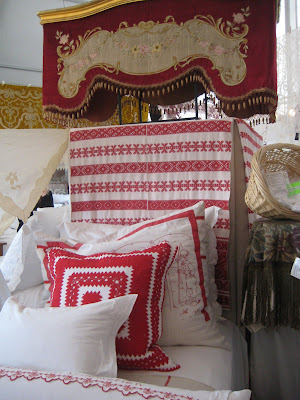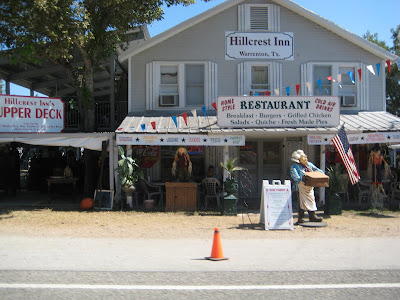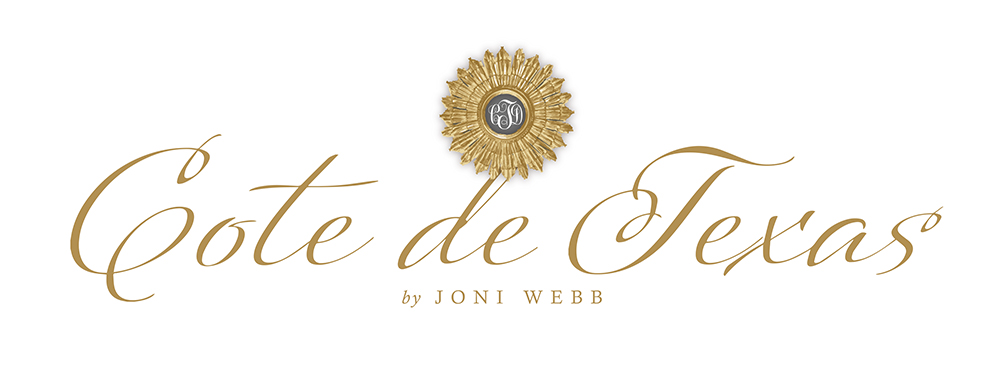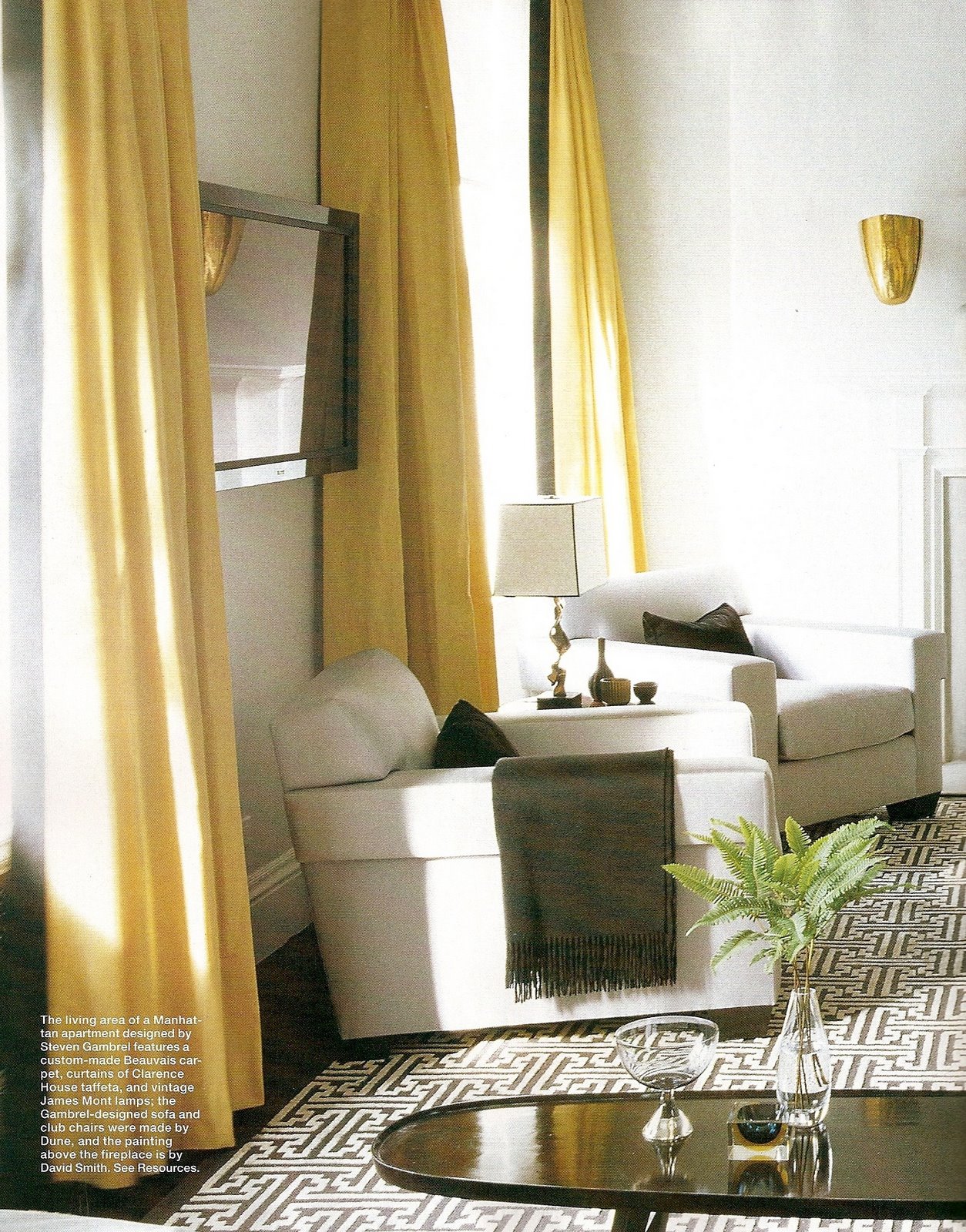
Round Top, Texas - population 77, except for the first two weeks in April and October each year. This is home to one of the largest antiques fairs in the United States. Started 40 years ago by Emma Lee Turney, the festival has grown from one location into a festival that overflows to all the tiny towns that surround Round Top. During the festival, large temporary, makeshift tent cities spring up where thousands upon thousands of dealers sell their wares. Once, the Round Top Antique Festival meant Americana and Texana antiques. Today, French, Swedish, and English antiques have overtaken the prominence that Americana and Texana once enjoyed. Now highbrow antiques share space with the very lowbrow: vintage, bric a brac, and just plain junk are plentiful in areas where the rent for stalls is cheap. If you love antiques and love to have a good time - Round Top is something to experience at least once in a lifetime. Situated between Austin, San Antonio and Houston, Round Top is a few hours drive through gorgeous countryside. The spring show is an especially nice time to go because the Texas wildflowers are in full bloom and the fields are a vibrant shade of blue from the bluebonnets. Until Round Top has been experienced, it's hard to explain the vastness of it all, and yet, despite it's size, it's still just down home Texas at its core. Web site of the
Round Top Register is a good place to start if you plan to come next spring.
 Round Top is a charming, tiny town halfway between Houston and Austin. Usually it's a sleepy, quiet place.
Round Top is a charming, tiny town halfway between Houston and Austin. Usually it's a sleepy, quiet place.
 Round Top, before the invasion, nice and quiet.
Round Top, before the invasion, nice and quiet. The Big Red Barn. And no, that woman is not in my party!
The Big Red Barn. And no, that woman is not in my party! Country Home Magazine always has a booth up front.
Country Home Magazine always has a booth up front.
 and Mary Emmerling always comes to sign books.
and Mary Emmerling always comes to sign books.
 White ironstone is everywhere. I love ironstone and collect it.
White ironstone is everywhere. I love ironstone and collect it.
 Garden antiques and furniture were popular this year.
Garden antiques and furniture were popular this year.
 Trend alert: Silver domes.
Trend alert: Silver domes. My idea of heaven: English ironstone, Staffordshire, transferware and Mason.
My idea of heaven: English ironstone, Staffordshire, transferware and Mason.
 I collect Mason ironstone and just had to buy a few pieces for my collection.
I collect Mason ironstone and just had to buy a few pieces for my collection.
 And two transferware plates. Notice the vendor excitedly adding up my purchases in the back.
And two transferware plates. Notice the vendor excitedly adding up my purchases in the back.
 Leaving the Big Red Barn, we head to a different area of vendors. Stuff is everywhere, overflowing.
Leaving the Big Red Barn, we head to a different area of vendors. Stuff is everywhere, overflowing.
 A pumpkin patch of antique vases.
A pumpkin patch of antique vases.
 This tent city advertised itself as European Antiques, one tent of many.
This tent city advertised itself as European Antiques, one tent of many.
 Swedish sofa and French chair. At this point I am wondering why I wasted two hours in the Big Red Barn.
Swedish sofa and French chair. At this point I am wondering why I wasted two hours in the Big Red Barn.
 French settee. Painted antiques are much more in demand now than those with typical fruitwood finishes.
French settee. Painted antiques are much more in demand now than those with typical fruitwood finishes.
 A Swedish tall clock. I want one of these, but pass this up.
A Swedish tall clock. I want one of these, but pass this up.
 Another booth with more painted French antiques.
Another booth with more painted French antiques.
 This booth was huge and specialized in European antique linens.
This booth was huge and specialized in European antique linens.
 A petite French woman owned this booth filled with both Swedish and French antiques. She has stores in L.A. and Dallas.
A petite French woman owned this booth filled with both Swedish and French antiques. She has stores in L.A. and Dallas.
 A yard full of muslin covered furniture.
A yard full of muslin covered furniture.
 Further along, we come to Marburger Farms. Relatively new to the Round Top festival, this tent city has grown from one tent to six huge ones.
Further along, we come to Marburger Farms. Relatively new to the Round Top festival, this tent city has grown from one tent to six huge ones.
 A booth at Marburger Farms. Known for a more European look than that at Round Top, Marburger Farms has become a huge presence at the festival. It takes at least two days to cover it properly. I tried to do it two hours and only made it to one tent.
A booth at Marburger Farms. Known for a more European look than that at Round Top, Marburger Farms has become a huge presence at the festival. It takes at least two days to cover it properly. I tried to do it two hours and only made it to one tent.
 Of course this sign lured me in here.
Of course this sign lured me in here.
 Trend alert: large clock face.
Trend alert: large clock face.
 Antique books by the yard. Had to pass these by, no more room for books that only look good, but won't read.
Antique books by the yard. Had to pass these by, no more room for books that only look good, but won't read.
 This statute was a standout at Marburger Farms.
This statute was a standout at Marburger Farms.
 Trend alert: Faux deer heads and intaglios.
Trend alert: Faux deer heads and intaglios.
 This booth was one of my favorites. African and Eastern goodies. Kelly Wearstler has dozens of these Chinese calligraphy brushes in her home. I have one now.
This booth was one of my favorites. African and Eastern goodies. Kelly Wearstler has dozens of these Chinese calligraphy brushes in her home. I have one now.
 More African goodies.
More African goodies.
 Ethiopian crosses. George Cameron Nash showroom sells these at quite a markup.
Ethiopian crosses. George Cameron Nash showroom sells these at quite a markup.
 The best was outside behind the booth. A stack of zebra rugs which I could not say no to.
The best was outside behind the booth. A stack of zebra rugs which I could not say no to.
 Now, this is a gorgeous chandelier: wood, gilded column and crystals. Too pricey, but a one of a kind piece I hated to leave behind. At this point I'm really regretting the money I spent at the Big Red Barn. Note to self: skip the Big Red Barn altogether next time.
Now, this is a gorgeous chandelier: wood, gilded column and crystals. Too pricey, but a one of a kind piece I hated to leave behind. At this point I'm really regretting the money I spent at the Big Red Barn. Note to self: skip the Big Red Barn altogether next time.
 This sofa reminded me of my new one.
This sofa reminded me of my new one.
 Display of antique bottles.
Display of antique bottles.
 I love French settees. If I had the space, I would have a settee in every room.
I love French settees. If I had the space, I would have a settee in every room.
 This dealer became incensed when I politely asked if something was a reproduction. Sorry, I still don't believe him. His prices were too cheap. All I could think of was how disappointed in me House of Beauty would be!
This dealer became incensed when I politely asked if something was a reproduction. Sorry, I still don't believe him. His prices were too cheap. All I could think of was how disappointed in me House of Beauty would be!

Hollywood Regency: there is virtually none here at Round Top and there is no mid century modern that I saw except for the junk from grandma's attic type.
 Leaving Marburger Farms, tent cities pop up all along the way to Warrenton, Texas.
Leaving Marburger Farms, tent cities pop up all along the way to Warrenton, Texas.
 Only in Texas: A suburban with a longhorn rack on it's hood. Edit: Liberty Post asked me whether I saw the Junk Gypsies, a trio of vintage-styled glam ladies who set up shop in Warrenton during Round Top. This suburban actually belongs to them. Thanks Liberty for the reminder. Check out the Junk Gypsies' web site for all kinds of wild merchandise: chandeliers, t shirts, pillows and coffee mugs are a small offering.
Only in Texas: A suburban with a longhorn rack on it's hood. Edit: Liberty Post asked me whether I saw the Junk Gypsies, a trio of vintage-styled glam ladies who set up shop in Warrenton during Round Top. This suburban actually belongs to them. Thanks Liberty for the reminder. Check out the Junk Gypsies' web site for all kinds of wild merchandise: chandeliers, t shirts, pillows and coffee mugs are a small offering.
 Warrenton, Texas: fields and fields of vendors everywhere. Lured by the low rental rates, thousands of people sell mostly bric a brac and vintage goods in Warrenton. You couldn't see it all even if you spent days looking.
Warrenton, Texas: fields and fields of vendors everywhere. Lured by the low rental rates, thousands of people sell mostly bric a brac and vintage goods in Warrenton. You couldn't see it all even if you spent days looking.
 Going home: Wait, one last stop! The Lone Ranger sells Swedish antiques out in the open in Warrenton. He informed me that he had sold a truckload that morning to top Houston interior designers who had beat me there. I couldn't say no to a gray Swedish clock that is now living on my landing. Imagine how I felt when I got home and discovered the insides had been replaced by a battery operated chime. Ebay anyone?
Going home: Wait, one last stop! The Lone Ranger sells Swedish antiques out in the open in Warrenton. He informed me that he had sold a truckload that morning to top Houston interior designers who had beat me there. I couldn't say no to a gray Swedish clock that is now living on my landing. Imagine how I felt when I got home and discovered the insides had been replaced by a battery operated chime. Ebay anyone?








 The November issue of Elle Decor is out and it is especially lucious this month. I would suggest you run and don't walk over to your favorite bookstore today and pick it up. And this month, don't wait for your subscription copy to come!! My copy is arealdy a mess, totally trashed out from schlepping it around with me everyhere I go. The cover shot is from the Boston Black Bay street apartment of designer Frank Roop and his wife Sharon. Photos from the living room and study are worth the price of the issue alone. The design team of Sills and Huniford are featured with an art filled NYC apartment. But wait, I haven't even gotten to the good stuff yet:
The November issue of Elle Decor is out and it is especially lucious this month. I would suggest you run and don't walk over to your favorite bookstore today and pick it up. And this month, don't wait for your subscription copy to come!! My copy is arealdy a mess, totally trashed out from schlepping it around with me everyhere I go. The cover shot is from the Boston Black Bay street apartment of designer Frank Roop and his wife Sharon. Photos from the living room and study are worth the price of the issue alone. The design team of Sills and Huniford are featured with an art filled NYC apartment. But wait, I haven't even gotten to the good stuff yet: Blogger favorite Steve Gambrel shows off his latest, above, a glorious NYC apartment located in a 1895 building. Two standouts are pictured: the custom Troy rug and the yellow Clarenace House silk drapes. Do NOT miss the custom brass art lights which become sculptures Gambrel takes something utilatarian and turns it into art.
Blogger favorite Steve Gambrel shows off his latest, above, a glorious NYC apartment located in a 1895 building. Two standouts are pictured: the custom Troy rug and the yellow Clarenace House silk drapes. Do NOT miss the custom brass art lights which become sculptures Gambrel takes something utilatarian and turns it into art.  But my favorite story, possible of the year, is Alex Papachristidis' Manhattan apartment. A riot of color and pattern, art and exotic "Grand Tour souveniors" - the home is cluttered perfection. Fortunys, ikats, and antique suzanis coexist as if they were taupe and cream linens instead of vibrant reds, yellows, and greens. There are enough up to the minute trend alerts here - it's obvious it will be outdated next year. But still, I'd spend a year here, living quite happily
But my favorite story, possible of the year, is Alex Papachristidis' Manhattan apartment. A riot of color and pattern, art and exotic "Grand Tour souveniors" - the home is cluttered perfection. Fortunys, ikats, and antique suzanis coexist as if they were taupe and cream linens instead of vibrant reds, yellows, and greens. There are enough up to the minute trend alerts here - it's obvious it will be outdated next year. But still, I'd spend a year here, living quite happily
